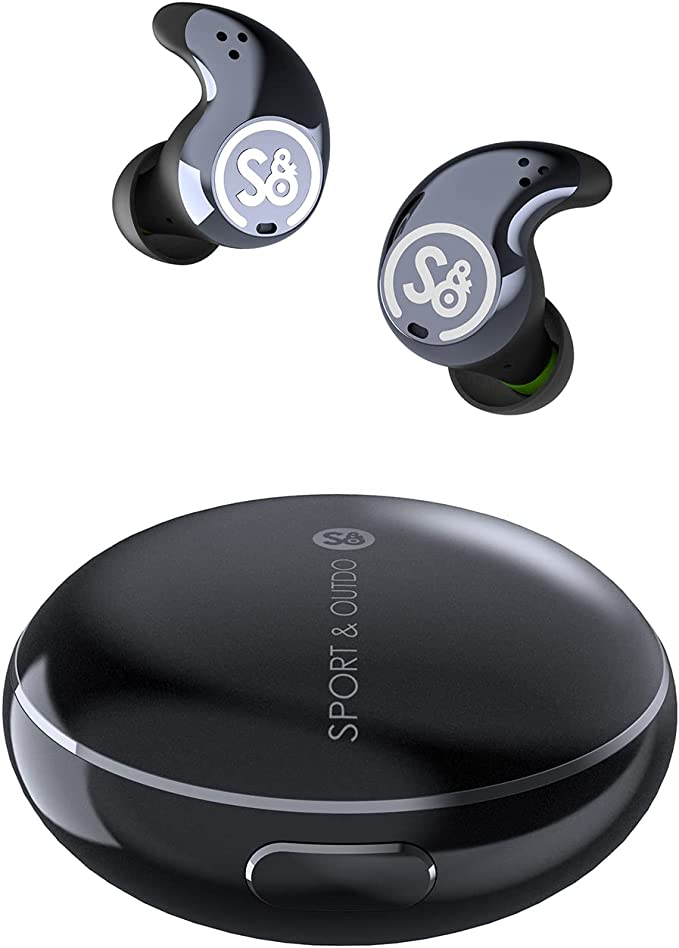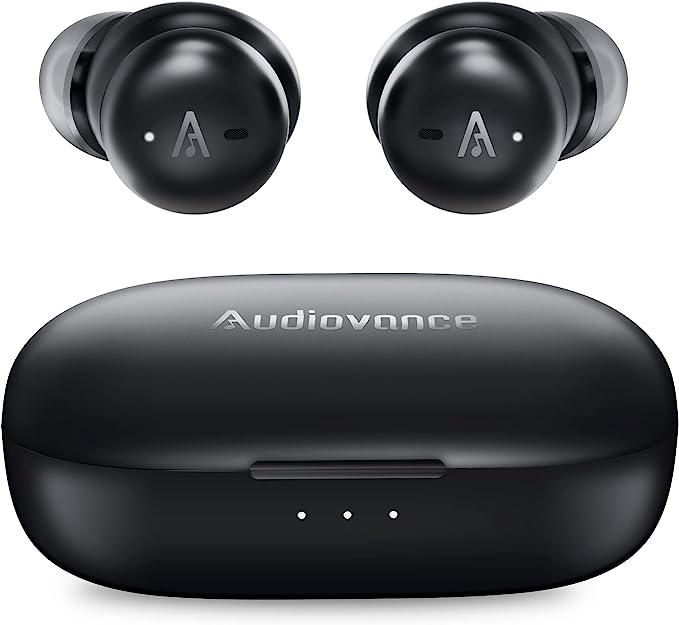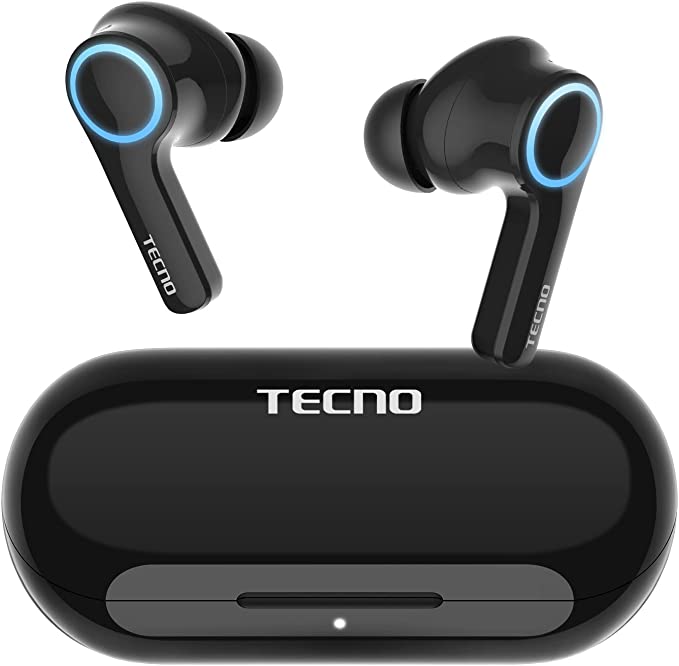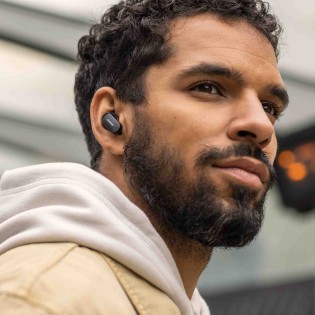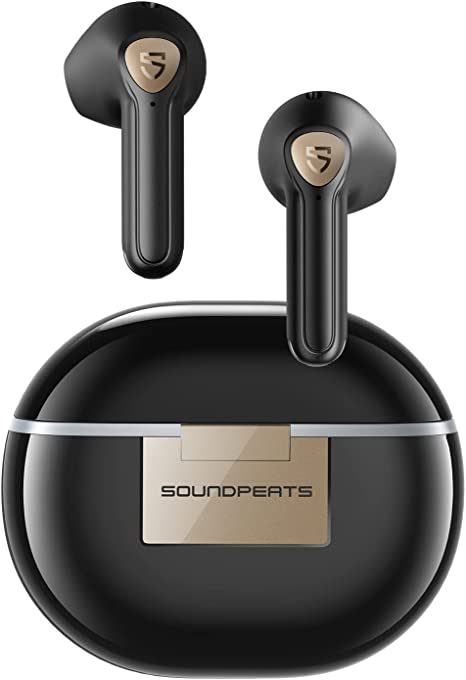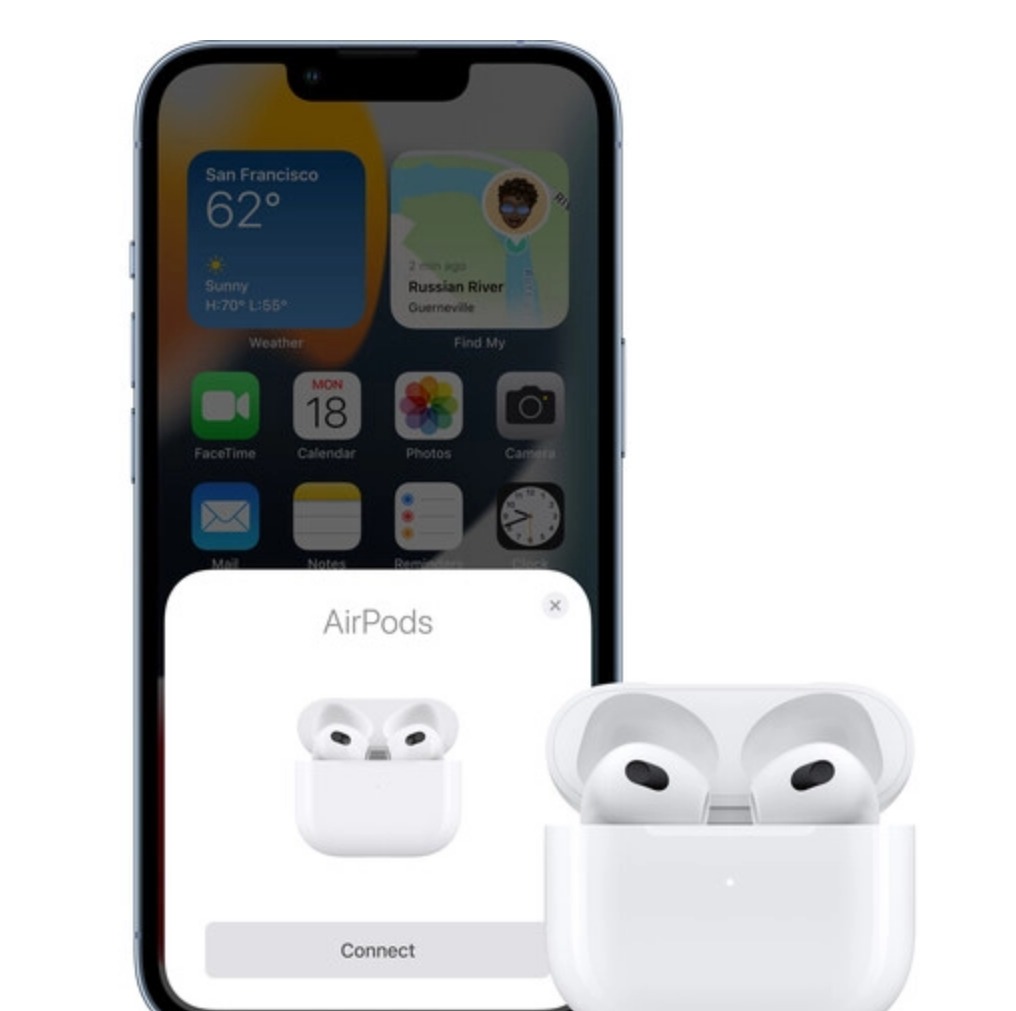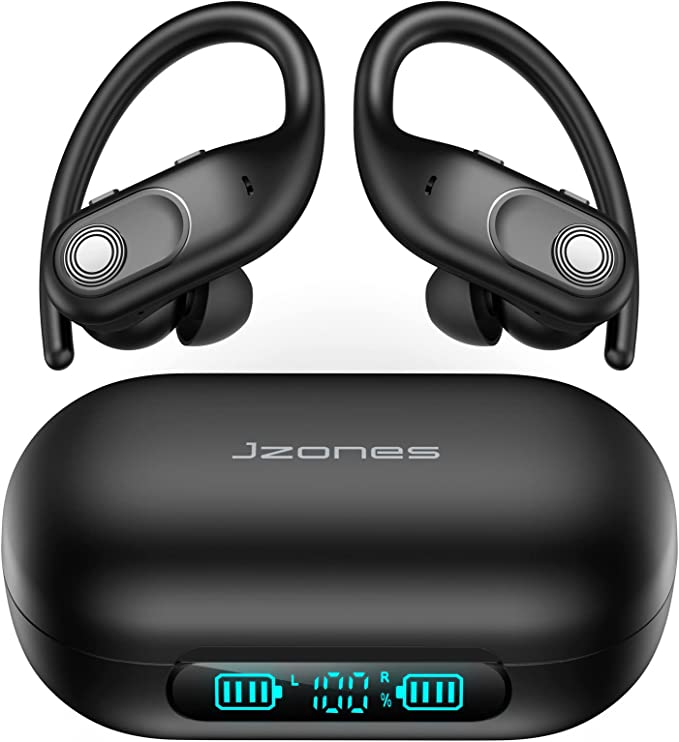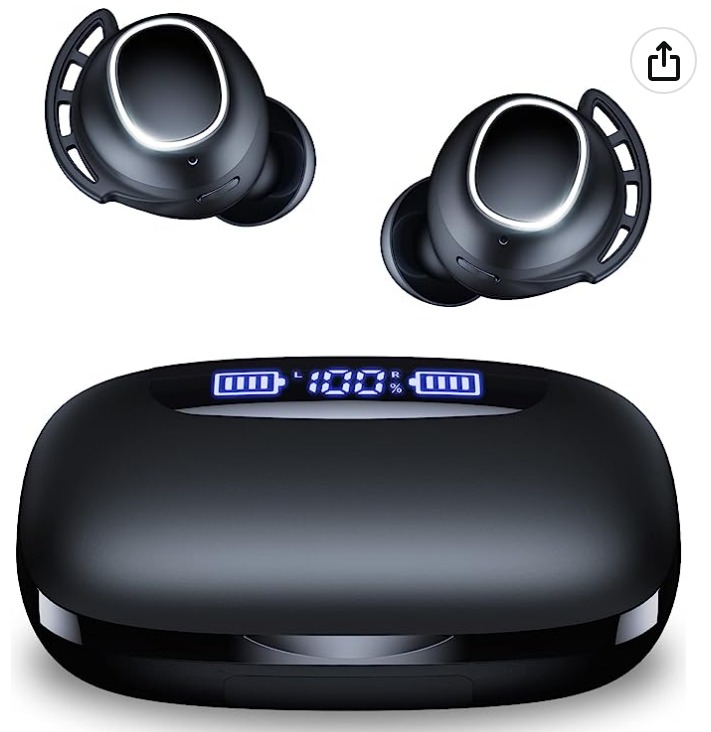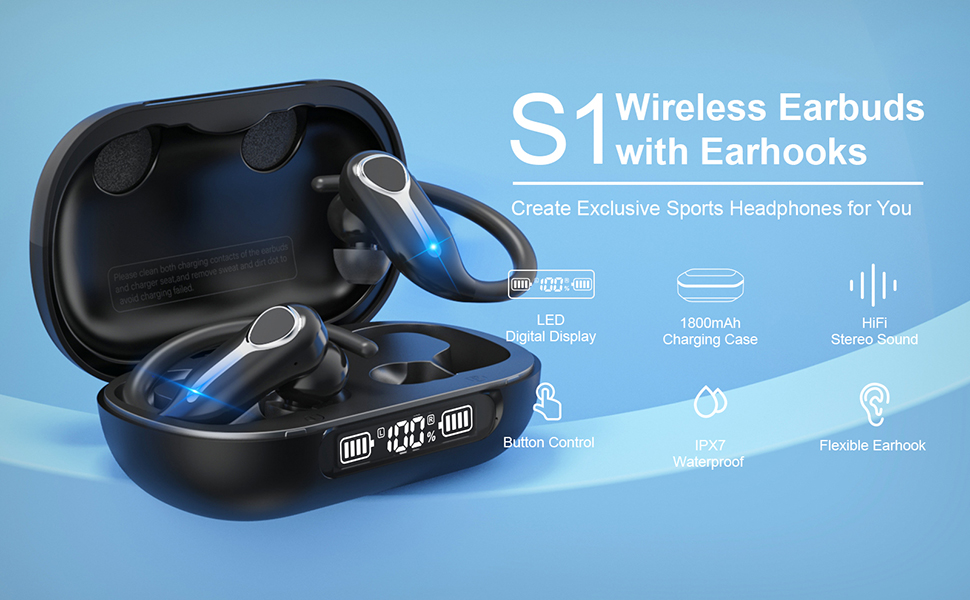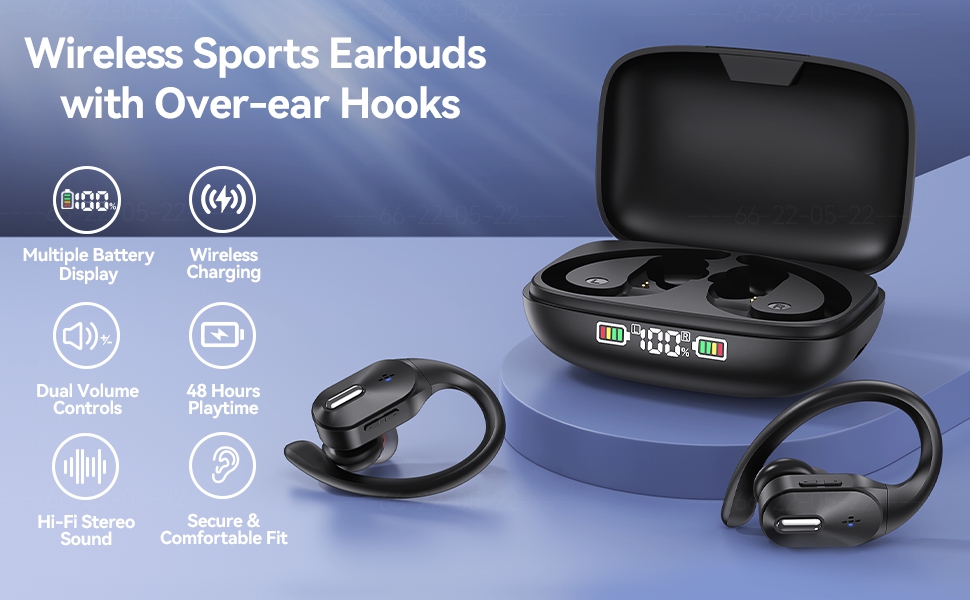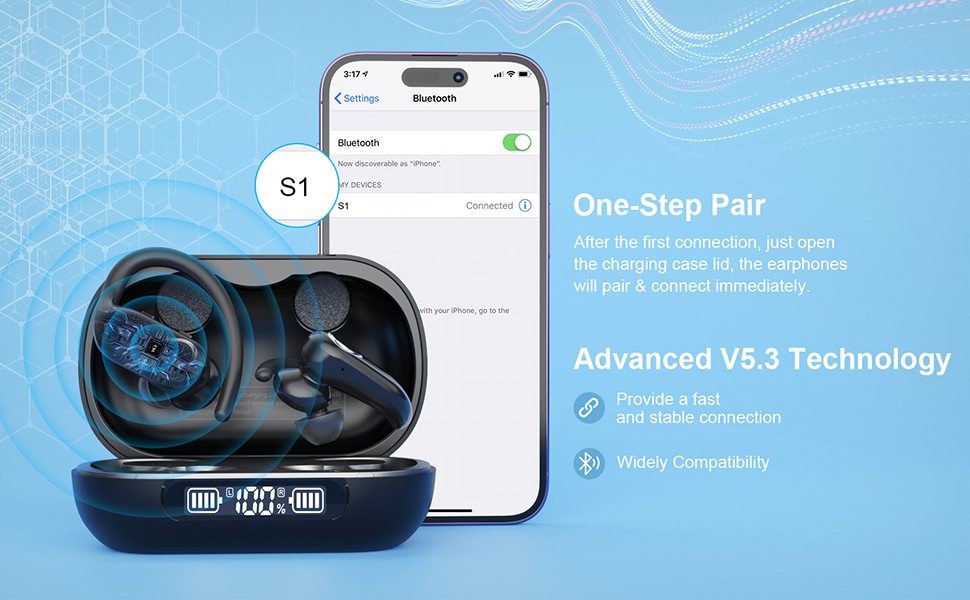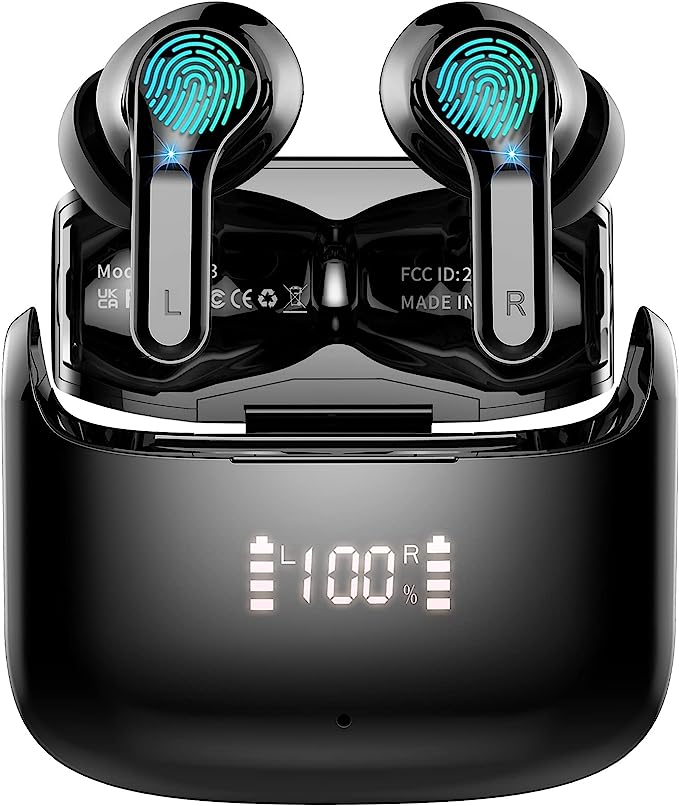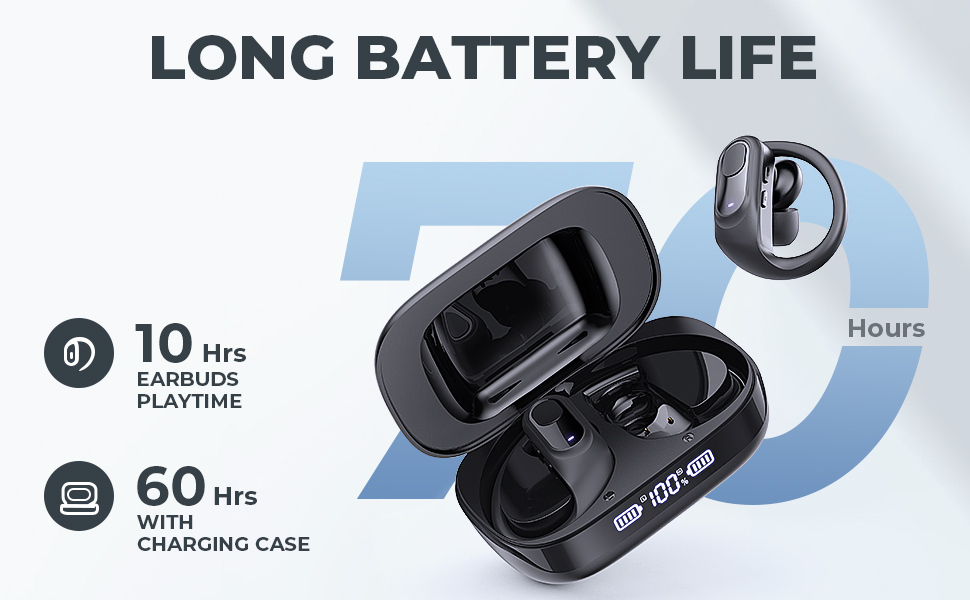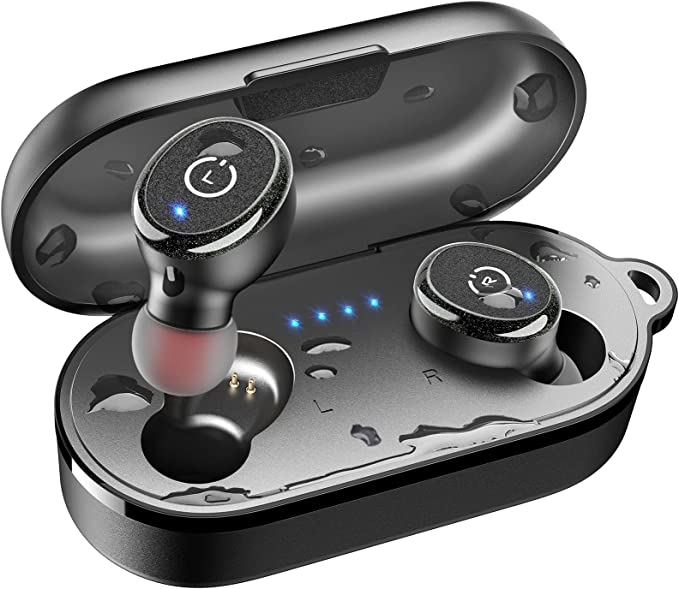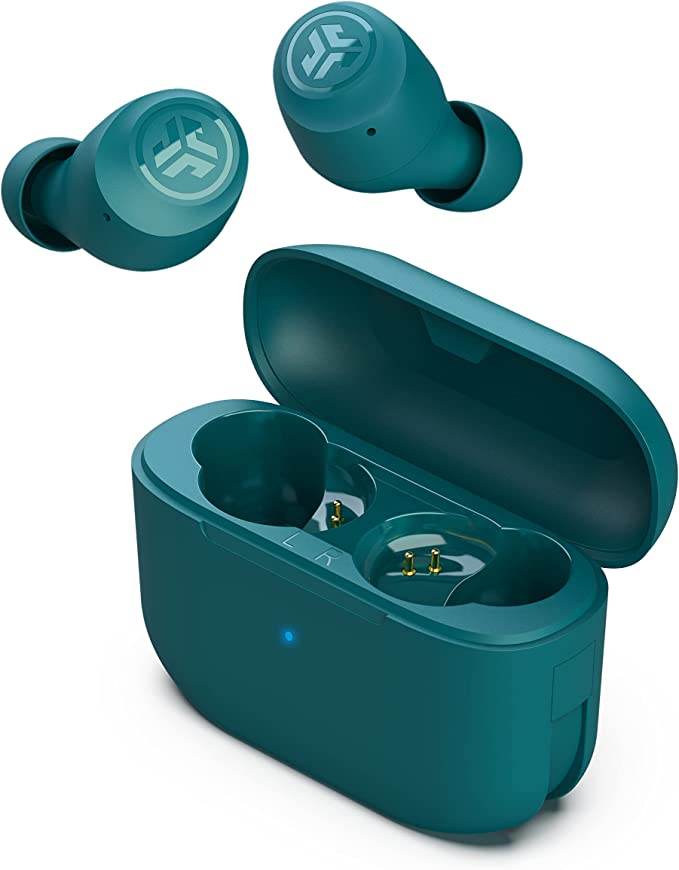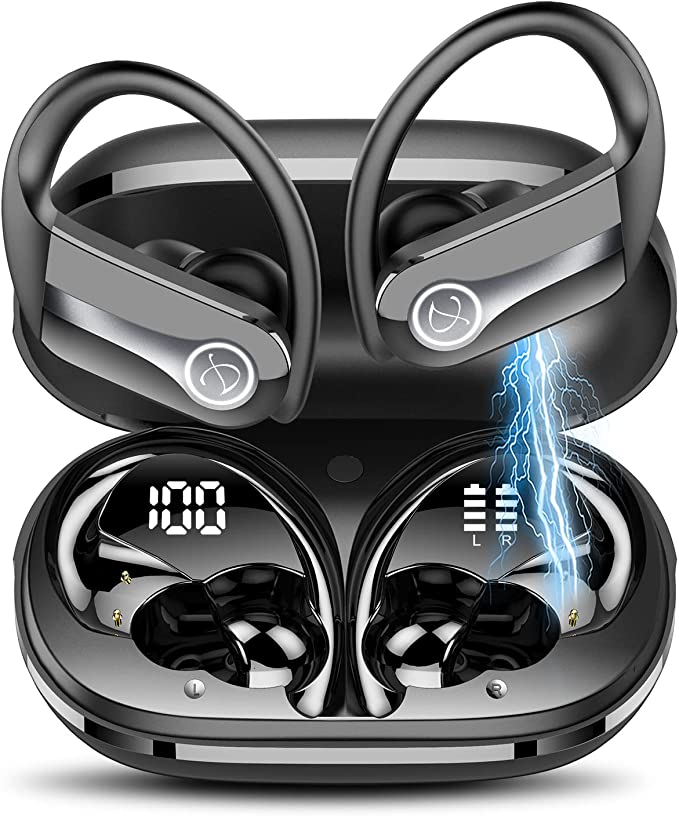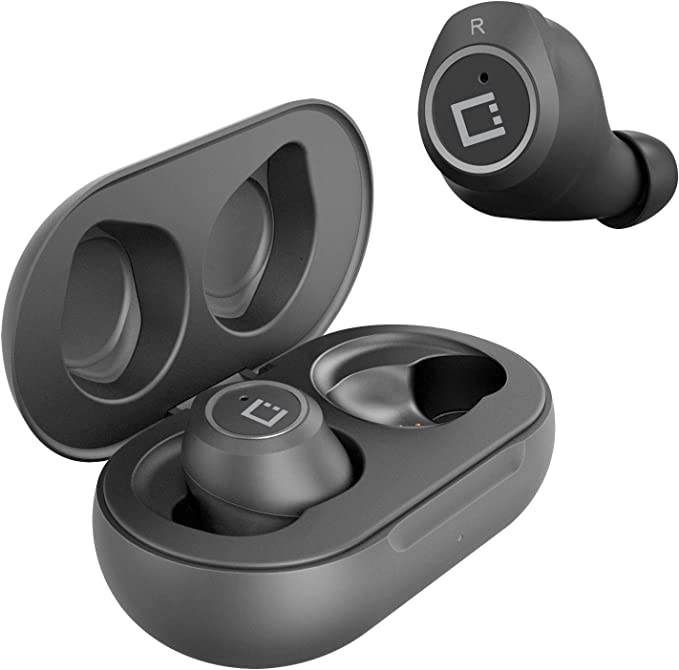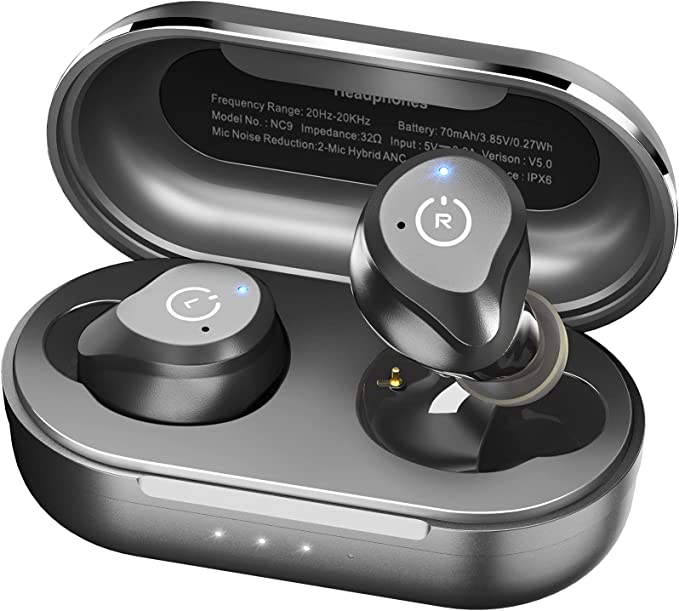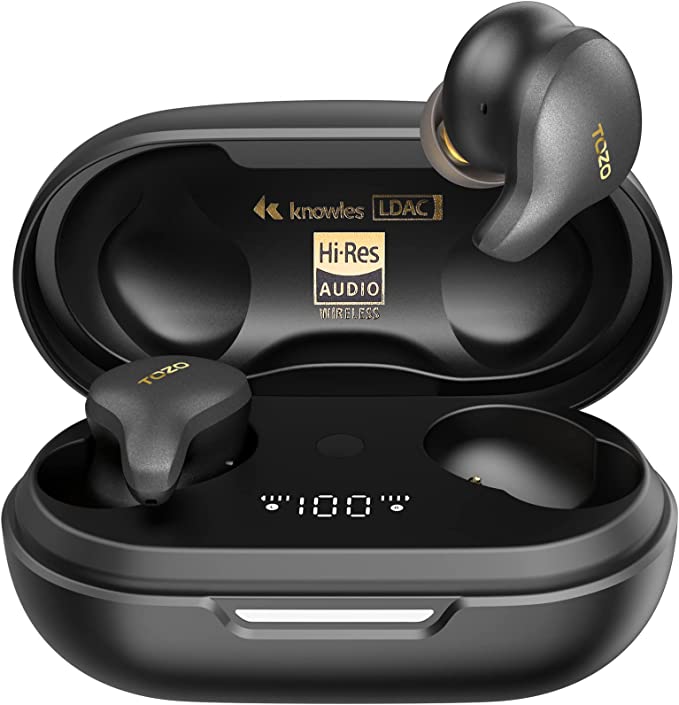Google Pixel Buds Pro Noise Canceling Earbuds: A Premium Listening Experience
Update on June 20, 2025, 5:01 p.m.
In our ceaselessly buzzing world, the quest for a personal oasis of sound—or conversely, a haven of profound silence—has become a modern mantra. We seek to be enveloped by our music, clear in our conversations, and undistracted in our focus. Personal audio devices have evolved dramatically, from cumbersome cans tethered by wires to the sleek, intelligent earbuds of today. Among these, the Google Pixel Buds Pro emerge not merely as another gadget, but as a compelling expression of where audio science, user-centric design, and smart technology converge, promising to subtly reshape our auditory relationship with the world around us.

The Alchemy of Quiet: Mastering Silence with Active Noise Cancellation and Silent Seal™
To truly appreciate what the Pixel Buds Pro offer, let’s first delve into the very nature of what they combat: noise. Sound, as we know, travels in waves, characterized by frequency and amplitude. “Noise” is simply unwanted sound. The headline feature here is Active Noise Cancellation (ANC), a technology that feels almost like magic, but is rooted in elegant physics. It’s not about physically “blocking” all sound like a thick wall; rather, it’s a sophisticated process of destructive interference. Imagine two perfectly matched water waves meeting: if one is a crest and the other is a trough of equal size, they cancel each other out, resulting in calm water. ANC does something analogous with sound waves. Microphones on the outside of the earbuds constantly “listen” to the ambient noise. This auditory information is fed to an onboard digital signal processor (DSP), which, in a fraction of a second, generates an “anti-noise” – a sound wave that is an exact mirror image (180 degrees out of phase) of the incoming noise. When this anti-noise is played through the earbud’s speaker, it meets the original noise wave at your eardrum, and they effectively nullify each other. The result? A significant reduction in perceived ambient sound, allowing your music or your thoughts to take center stage. This is a far cry from early noise reduction techniques, which were often less adaptive and could sometimes introduce an undesirable “hiss.”
However, the electronic wizardry of ANC is only half the story. Google’s Silent Seal™ technology is the crucial counterpart. Think of it as creating the perfect canvas upon which the ANC can paint its silence. For ANC to be maximally effective, a good physical seal between the earbud and your ear canal is paramount. This passive noise isolation already reduces a good chunk of external sound, particularly higher frequencies. What Silent Seal™ brings to the table is a design philosophy aiming for a dynamic, adaptive fit. The earbuds are engineered to nestle into the unique contours of your ear. This isn’t just about offering different eartip sizes (though that’s a fundamental starting point, and as user Liskrig from the Google Store found, sometimes an aftermarket tip like Spinfit can perfect this for individuals). The “Pro” design also incorporates sensors to help alleviate that “plugged-ear” feeling, or occlusion effect, which can make some in-ear devices uncomfortable by trapping air pressure or amplifying internal body sounds like your own voice or footsteps. By optimizing this seal, the Pixel Buds Pro create a more consistent and controlled acoustic environment for the ANC to work its magic, which likely contributes to experiences like Liskrig’s, who noted the absence of that low “thump” sound while walking—a common annoyance when an earbud seal isn’t quite right or when movement affects it.

Crafting Your Personal Concert: The Science of Rich Sound and Adaptive Audio
Once a sanctuary of quiet is established, the quality of the sound within that sanctuary becomes paramount. What exactly constitutes “premium” sound? It’s a complex interplay of the audio source, the digital-to-analog conversion, the amplification, and critically, the speaker drivers themselves—the tiny transducers that convert electrical signals back into the sound waves your ears perceive. While Google doesn’t detail the specific driver technology in the provided material, achieving rich, immersive sound typically involves custom-engineered drivers capable of accurately reproducing a wide frequency range with minimal distortion.
A particularly clever piece of audio engineering in the Pixel Buds Pro is Volume EQ. Have you ever noticed how music can sound “thin” or lacking in bass when you turn the volume down low, and then perhaps too boomy or shrill when turned up loud? This isn’t just your imagination; it’s a well-documented psychoacoustic phenomenon related to how our ears perceive different frequencies at different loudness levels. Our hearing is most sensitive in the mid-frequencies (where human speech primarily lies). At lower volumes, our sensitivity to very low bass and very high treble frequencies diminishes. This is scientifically described by equal-loudness contours, such as those defined by the ISO 226:2003 standard (which updated the older Fletcher-Munson curves). Volume EQ intelligently counteracts this. As you adjust the volume slider, the Pixel Buds Pro dynamically re-balance the equalization, subtly boosting or attenuating different frequency bands to ensure that the music retains its perceived richness, clarity, and tonal balance, whether you’re listening at a late-night whisper or at a more energizing level. It’s about delivering a consistent sonic character, respecting the artist’s original intent as much as possible, across the entire volume range.
For those who wish to sculpt the sound further to their personal taste, the Pixel Buds Pro offer a customizable equalizer. User Liskrig mentioned its “friendly” names: “Upper Treble,” “Treble,” “Mid,” “Bass,” and “Low Bass.” While perhaps not the multi-band parametric EQ an audiophile might crave, these five bands offer a straightforward way to tweak the sound signature. “Low Bass” likely targets the sub-bass frequencies that give music its visceral rumble (typically below 60 Hz). “Bass” would cover the main body of bass notes (around 60-250 Hz). “Mid” encompasses the critical midrange (roughly 250 Hz to 2 kHz) where vocals and many instrumental fundamentals reside. “Treble” (around 2 kHz to 6 kHz) brings clarity and presence, and “Upper Treble” (above 6 kHz) contributes to airiness and a sense of detail. This approach reflects a balance: providing enough control for meaningful personalization without overwhelming the average user.
Looking towards the horizon of audio experiences, the Pixel Buds Pro also support Spatial Audio. This technology aims to create a three-dimensional, immersive sound field that makes it feel as though sound is coming from all around you, not just from two points inside your ears. It often relies on sophisticated algorithms and Head-Related Transfer Functions (HRTFs)—which model how sound interacts with our head, torso, and outer ears—to trick our brain’s auditory processing system. While the full impact of Spatial Audio is heavily dependent on content specifically mixed for it (as user Chris K. alluded to), its inclusion signals a move towards more enveloping and lifelike listening experiences for music, movies, and gaming.

The Unmistakable Voice: Engineering Crystal-Clear Conversations in a Noisy World
In an era of constant connectivity, the ability of our earbuds to facilitate clear voice calls is non-negotiable. We’ve all experienced the frustration of calls plagued by background noise. The Pixel Buds Pro tackle this with a multi-pronged strategy. Firstly, beamforming microphones. Instead of a single microphone trying to pick up everything, these earbuds utilize a microphone array. By analyzing the minute differences in the time it takes for your voice (and unwanted noises) to reach each microphone, sophisticated algorithms can create a directional “beam” focused towards your mouth. This amplifies your speech while simultaneously attenuating sounds originating from other directions, like office chatter or traffic rumble.
Adding another layer of intelligence is a voice accelerometer. This sensor is quite ingenious: it detects the vibrations produced in your jawbone when you speak. Because these vibrations are directly coupled to your speech, the accelerometer can help the system distinguish your voice from airborne ambient noise, especially in very loud or windy conditions where traditional microphones might struggle. It’s a subtle nod to the principles of bone conduction technology.
And finally, a seemingly simple but effective element: wind-blocking mesh covers over the microphones. Wind striking a microphone diaphragm directly creates a lot of low-frequency noise, often described as “rumble.” These mesh covers act as a physical barrier, disrupting the airflow and reducing this wind noise before it even hits the microphones. The cumulative effect of these technologies is what allows for experiences like those recounted by user Oneil, who was able to have a clear conversation while on a windy beach, with the person on the other end entirely unaware of the challenging acoustic environment. It’s this kind of real-world performance that truly defines the “Pro” in communication.

Seamlessly Connected: The Intelligence of an Integrated Audio Ecosystem
Modern earbuds are far more than just miniature speakers; they are increasingly intelligent extensions of our digital lives, acting as conduits to information and control. A key feature for many in today’s multi-device reality is Multipoint Bluetooth connectivity. This allows the Pixel Buds Pro to be actively connected to two source devices simultaneously—for example, your smartphone and your laptop. Imagine listening to music on your laptop, and a call comes in on your phone. With multipoint, the earbuds can automatically switch the audio focus to your phone for the call, and then potentially switch back to your laptop’s audio once the call ends. This eliminates the tedious dance of manually disconnecting from one device and reconnecting to another, a small but significant friction point in daily workflows. This seamless switching is managed through sophisticated handling of Bluetooth profiles, such as A2DP (Advanced Audio Distribution Profile) for stereo music and HFP (Hands-Free Profile) for calls.
When you do want to engage with the world around you, Transparency Mode comes into play. Essentially the opposite of ANC, it uses the same external microphones to capture ambient sounds, but instead of canceling them, it feeds them through to your ears in real-time. This is invaluable for maintaining situational awareness – hearing traffic while on a run, catching an announcement at the train station, or having a quick chat with a colleague without needing to remove your earbuds. While some users, like Liskrig, noted that the implementation might not feel as “natural” as some competitors, indicating that the audio processing for transparency is a complex art still being refined across the industry, its utility is undeniable.
And, naturally, for users embedded in the Google ecosystem, the tight integration with Google Assistant is a cornerstone. Simple voice commands (“Hey Google…”) can control music playback, fetch directions, send texts, or provide information, all hands-free. This is further streamlined on Android devices by Google Fast Pair, a technology that uses Bluetooth Low Energy (BLE) broadcasts to simplify and expedite the initial pairing process, making setup a breeze.
Designed for Life: Ergonomics, Durability, and the Thoughtful Details
For a device designed to be worn for potentially hours on end, comfort is not a luxury; it’s a necessity. The ergonomics of in-ear earbuds are incredibly complex, as ear shapes and sensitivities vary wildly. Google’s design aims for a “comfortable, secure fit,” which involves careful consideration of the earbud’s shape, weight distribution, and the materials used—particularly for the eartips, which are often made from medical-grade silicone. The inclusion of three eartip sizes is a standard attempt to cater to this variability, but as Liskrig’s experience with Spinfit aftermarket eartips shows, for some users, achieving that perfect, comfortable, and stable seal might require further personalization. The mention of “sensors to reduce the plugged-ear feeling” also points to an awareness of the occlusion effect and attempts to mitigate it, possibly through micro-venting or specific acoustic designs.
In terms of resilience against the rigors of daily life, the Pixel Buds Pro carry an IPX4 water resistance rating. Let’s decode that: “IP” stands for Ingress Protection, a standard defined by the International Electrotechnical Commission (IEC 60529). The ‘X’ means the device hasn’t been specifically rated for dust ingress (though a good seal often provides some incidental protection). The ‘4’ signifies that the earbuds are protected against splashing water from any direction. This makes them perfectly suitable for sweaty workouts at the gym, or for getting caught in a light rain shower. However, it’s crucial to understand that IPX4 means water-<em>resistant</em>, not water<em>proof</em>. They are not designed for submersion in water, so swimming with them is out of the question.
A thoughtful inclusion is the Hearing Wellness feature. There’s a growing global awareness of the risks of Noise-Induced Hearing Loss (NIHL), which can result from prolonged exposure to loud sounds. Organizations like the World Health Organization (WHO) provide guidelines for safe listening – for example, suggesting that exposure to sound levels above 80 decibels (dB) should be limited. Features that help users track their sound exposure, such as monitoring average volume levels over time and how long they’ve been listening, empower them to make more informed decisions about their listening habits. It’s a subtle but important nod towards responsible technology use, encouraging users to enjoy their audio without inadvertently harming their long-term hearing.
Powering Your Day (and Night): Battery Longevity and the Ease of Wireless Charging
All this sophisticated technology requires power, and the Pixel Buds Pro aim to deliver. The earbuds themselves are rated for up to 11 hours of listening time on a single charge, with the compact charging case extending that to a total of up to 31 hours. These figures are typically achieved under specific test conditions (often with ANC off and at a moderate volume level), but they provide a solid benchmark. The science behind this longevity lies in modern Lithium-ion battery technology, which offers a high energy density (a lot of power in a small package) and can withstand numerous charge-discharge cycles.
The convenience factor is further boosted by the case’s support for Qi-certified wireless charging. Qi (pronounced “chee”) is a global standard for wireless power transfer developed by the Wireless Power Consortium (WPC). It works on the principle of electromagnetic induction: a coil in the charging pad creates an oscillating magnetic field, which induces a current in a corresponding coil inside the Pixel Buds Pro case, thereby charging its battery without the need for physical cable connections. For those moments when you’re short on time, a quick charge feature is also present – often something like 5 minutes of charging in the case can provide an hour or so of playback for the buds.
Conclusion: The Evolving Symphony of Personal Audio – Intelligent, Immersive, and Intimately Yours
The Google Pixel Buds Pro are more than just a collection of features; they represent a microcosm of the remarkable advancements rippling through personal audio. We see the convergence of acoustics in the nuanced dance of ANC, the power of digital signal processing in features like Volume EQ and beamforming, the precision of materials science in their ergonomic and durable construction, the intelligence of AI in voice assistance, and a deep consideration for user experience design throughout.
The trajectory of personal audio is clearly pointing towards devices that are not only more capable but also more intelligent, more personalized, and more seamlessly integrated into the fabric of our lives. They are becoming context-aware, anticipating our needs, and striving to deliver sound that is not just heard, but felt. As we look to the future, we can anticipate earbuds that might offer even more sophisticated health monitoring, more adaptive and imperceptible environmental sound control, and perhaps even new ways of interacting with our digital and physical worlds through the medium of sound.
Ultimately, the goal of all this intricate technology, from the tiniest accelerometer to the most complex algorithm, remains profoundly human: to enhance our connection—to music, to information, to each other—and to do so in a way that feels intuitive, enriching, and never intrusive. The Google Pixel Buds Pro are a significant step on that ongoing journey, engineering both serenity and symphony for our ears.
